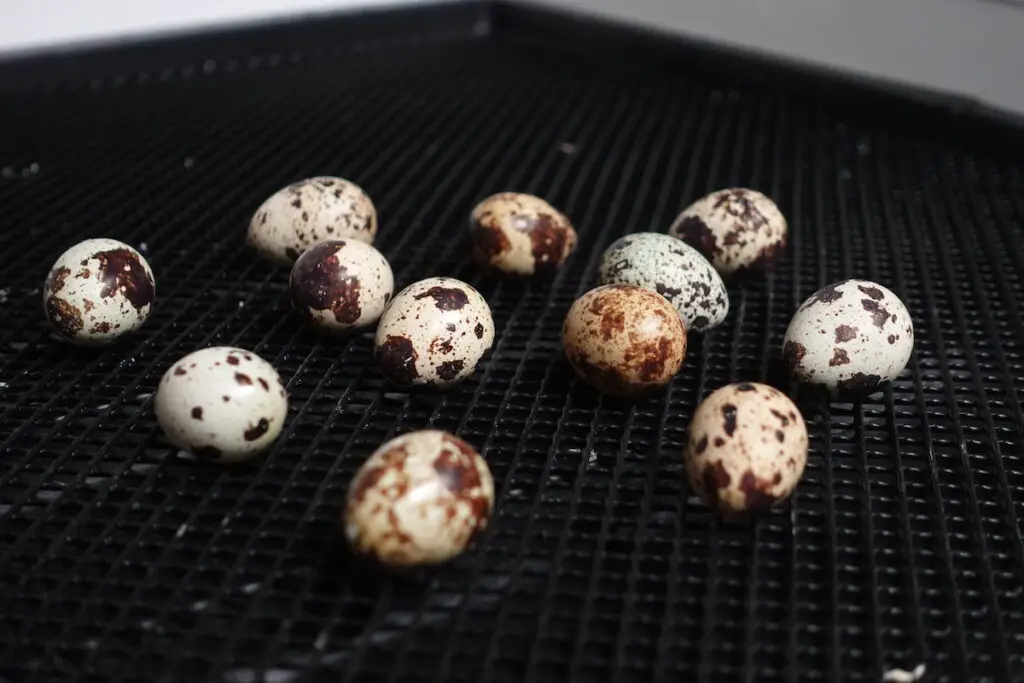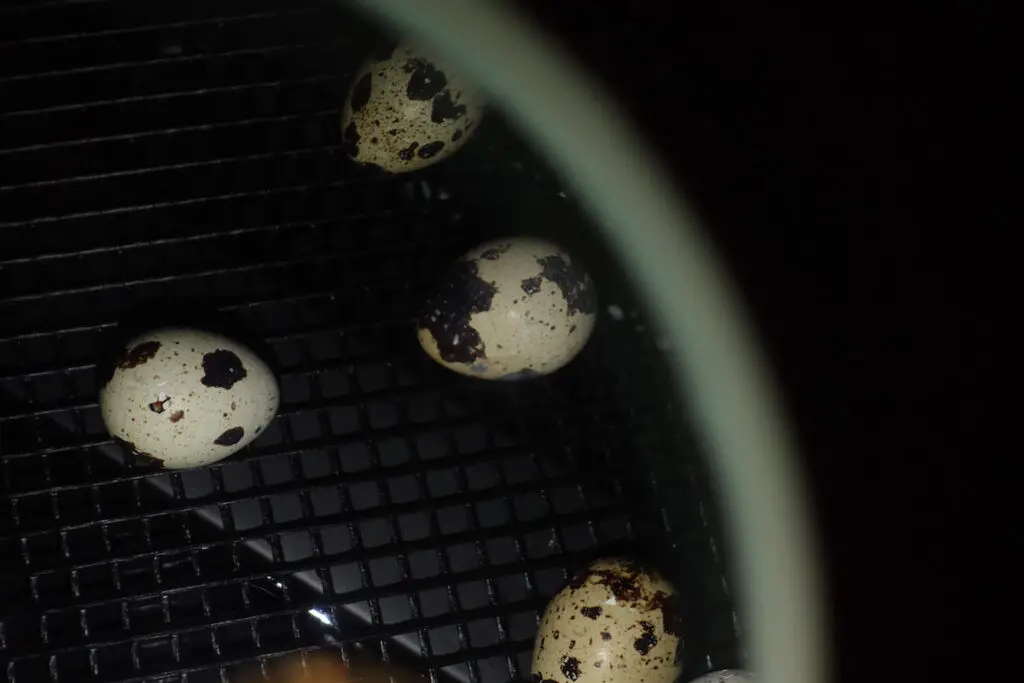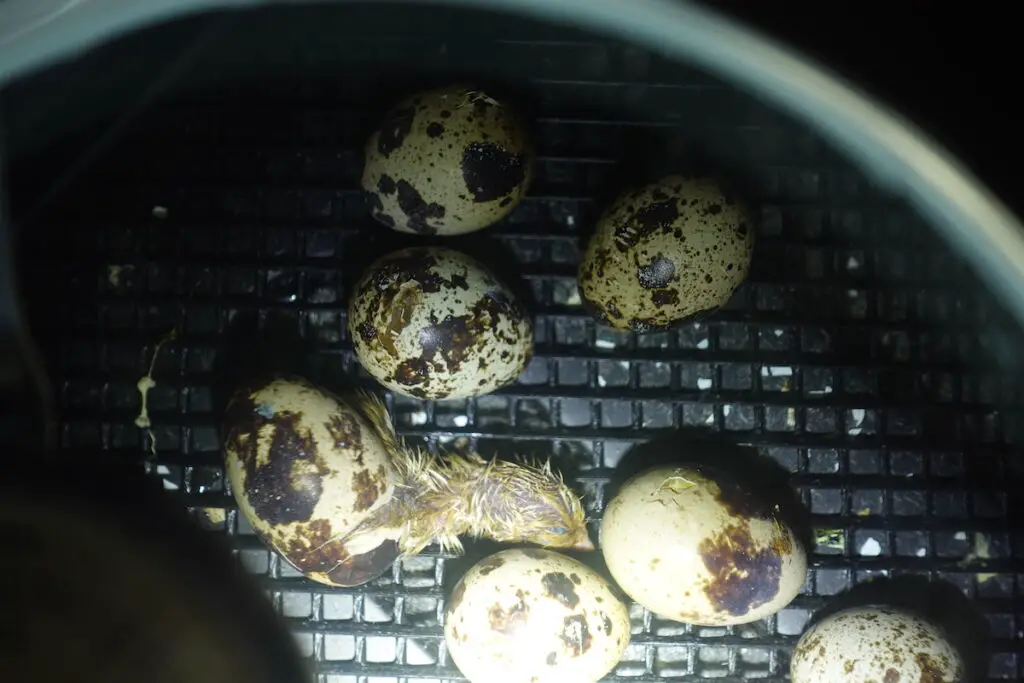Quail eggs must go into lockdown in the last days of incubation to prepare the chicks for hatching. Getting this right makes a big difference in your hatching rate. But what is a lockdown, why is it important, and how to get it right? Let’s find out everything you need to know.
Egg lockdown means that you stop turning the eggs during the incubation process in the last few days, and you let them lay flat on their side so the chick can move into the hatching position. Simultaneously you raise the humidity to 75-85% to soften the eggshell and facilitate the breaking of the shell.
Quail eggs usually hatch between days 16 and 18 of the incubation process. The eggs should move into lockdown at the end of day 14 or at the beginning of day 15, which helps prepare the eggshell and the chick inside the egg to get ready for hatching. The two main purposes of the lockdown in the last few days are to:
- Soften the eggshell, so it is easier for the bird to break it
- Allow the bird to move into the proper position to break the shell.
Setting the egg on its side
When you move the eggs into lockdown, you allow the quail chicks to orient themselves inside the egg in a way that they can poke a hole on the egghsell with their beaks. If they are in constant motion, assuming this position is impossible.
Learn how to raise your own quail and have an unlimited supply of eggs and meat.

Throughout the first 14 days of the incubation process, you need to turn the eggs several times a day (once every two-three hours). This prevents the quail chicks from getting stuck to the eggshell and turning into quitter eggs or dying in the hatching process.
If you observe quail hens, they turn their eggs naturally as they sit on them. They don’t do this consciously, but they are hard-wired this way.
Some incubators, especially older models, don’t have the built-in egg-turning function, but it is done manually. My grandmother used to incubate eggs and had to turn them in every few hours.

Egg-turning is pretty much a hands-off process nowadays because almost all incubators, especially those made for amateur breeders, come with egg turners built in. In some models, you can even choose the frequency with which you want to turn them.
Some incubators even have the lockdown process automated. You can select the type of egg you’re incubating, and they automatically stop turning. In many incubators, you need to manually turn off the egg turner and remove the eggs from the turning tray.
Raising humidity level
As the lockdown begins, you should also raise the humidity level inside the incubator. The recommended humidity level during the first 14 days is 40-60%, and you need to increase it to 75-85% for the last few days.
Some incubators come with built-in hygrometers, while in some others, you need to insert one to get a reading. Some high-end models don’t just display the humidity level, but they also control it by injecting the needed amount of water from a reservoir into the incubator.
Since incubation temperature is quite high (99.5°F or 37.5°C), and it’s a well-enclosed environment that provides its own micro-climate, it’s quite easy to raise the humidity by adding water to the system, which evaporates and gets trapped by the lid of the incubator.
The reason lockdown needs to be more humid than the first 14 days is that the shell of quail eggs is very hard, and it needs to be softened so the chicks can hatch easily. More humidity makes the egg-shell softer.
Once the eggs go into lockdown, it’s best not to open the lid anymore because it lets the warm air and the extra humidity escape. Depending on the external humidity and temperature, it can take up to several hours to establish the desired levels.
Lockdown temperature
The temperature of the incubator during quail egg lockdown remains the same as before, 99.5°F or 37.5°C. This corresponds to the body temperature of the quail.
It’s important to keep this temperature constant throughout the incubation process to get a successful hatch rate. If the temperature significantly rises or drops for an extended period of time of the incubation (more than a few minutes), including lockdown, your quail chicks will die.
Some incubators also offer a ventilation feature, which helps with the even distribution of the temperature and humidity. If you’re still in before buying an incubator, I highly recommend you get one that has this function built-in as well.
Watch the miracle

After you’ve set your eggs into lockdown, your job is done, and you don’t need to get involved anymore.
As the chicks inside the egg get ready for hatching, you can observe that the eggs shake and wiggle every now and then. After a while, you can see a tiny hole in the egg, the chick chipping away at the eggshell. Through the tiny hole, you can see a small beak working away and making it larger by the hour and by the minute.

If you’ve done everything correctly, you will see your baby quail hatch within a few hours.
If this is your first time incubating quail eggs, I recommend you to read this article I wrote, which helps you to get high hatch rates consistently.
Happy Quailing!

